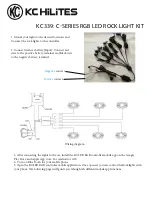
Bravo-Brava
Engine
Fuel system
10.
HITACHI INTEGRATED INJECTION/IGNITION SYSTEM
Introduction
The H itach i system fitted on the Bravo-Brava with the 1747 i.e. 16v eng i ne belongs to the category of static
advance digital electronic ignition systems integrated with multiple phased type intermittent electronic
fuel injection systems.
This system therefore has only one control unit, one set of wiring and one set of common sensors for
both systems.
The integrated system can be summarized in the following syb systems:
E L E C T R I C A L / E L E C T R O N I C C I R C U I T
AIR INTAKE C I R C U I T
F U E L S U P P L Y C I R C U I T
EMISSION C O N T R O L DEVICES
The system is capable of detecting the following parameters via special sensors:
1. the engine rotation speed;
2. the position of each pair of pistons in relation to T D C for cylinder 1;
3. the engine intake air flow rate;
4. the position and the speed of the variation of the position of the accelerator butterfly;
5. the temperature of the engine coolant;
6. the effective strength of the mixture (through the Lambda sensor signal);
7. the presence of detonation;
8. the speed of the vehicle;
9. the battery voltage;
10. whether the climate control compressor is switched on.
This information, usually of an analogue type, is converted into digital signals by analogue/digital
(A/D) converters in order to be able to be used by the control unit.
In particular, any engine operating point is detected, moment by moment, by two parameters:
- the engine rotation speed, measured in revolutions per minute (rpm);
- the engine load, which is constituted by the quantity of air drawn in by each cylinder.
This quantity is calculated on the basis of the flow rate of the air drawn in and is represented by the pa-
rameter TP, measured in milliseconds (ms).
Inside the control unit memory there is a managment programme (software) which comprises a series of
strategies, each of which manages a precise system control function.
By using the (input) information listed previously, each strategy processes a series of parameters, based
on the data maps stored in the control unit memories and then controls the system (output) actuators
which are the devices which allow the engine to operate, namely:
1. injectors;
2. ignition coils;
3. solenoid valves implementing various functions;
4. fuel pump;
5. control relays.
NOTE The HITACHI injection/ignition system does not require any adjustment as it is self-regulating
and self-adjusting.
NOTE In the diagrams, the numbers indicate the corresponding HITACHI engine control unit pins.
NOTE All the connectors are seen from the side opposite the cable input.
Copyright by Fiat Auto
1
Summary of Contents for 1995 Brava
Page 20: ......
Page 56: ...Technical data Gearbox and differential 00 21 27 Bravo Brava 48 Print no 506 670 70...
Page 58: ...Technical data Gearbox and differential 00 21 27 Bravo Brava 50 Print no 506 670...
Page 100: ......
Page 101: ...Untitled Document Removing Refitting file D Volume 201 engine htm08 07 2006 16 06 14...
Page 232: ...2 CQ 5 C Q E E c L U i f 2 a Z 5 ui o 1 o...
Page 281: ......
Page 350: ......
Page 397: ......
Page 418: ...t...
Page 441: ...Braking system Bravo i g j j u o v...
Page 455: ......
Page 461: ...Bravo Brava Braking system Anti lock braking system 33 P4A05AD02 Copyright Fiat Auto 5...
Page 517: ...Bravo Brava Suspension and wheels Front suspension 44 P4A003G02 Copyright Fiat Auto 3...
Page 523: ...Bravo Brava Suspension and wheels Front suspension P4A009G05 Copyright Fiat Auto 9...
Page 532: ...Suspension and wheels Bravo Brava Rear suspension 44 1 8 Publication no 506 670...
















































